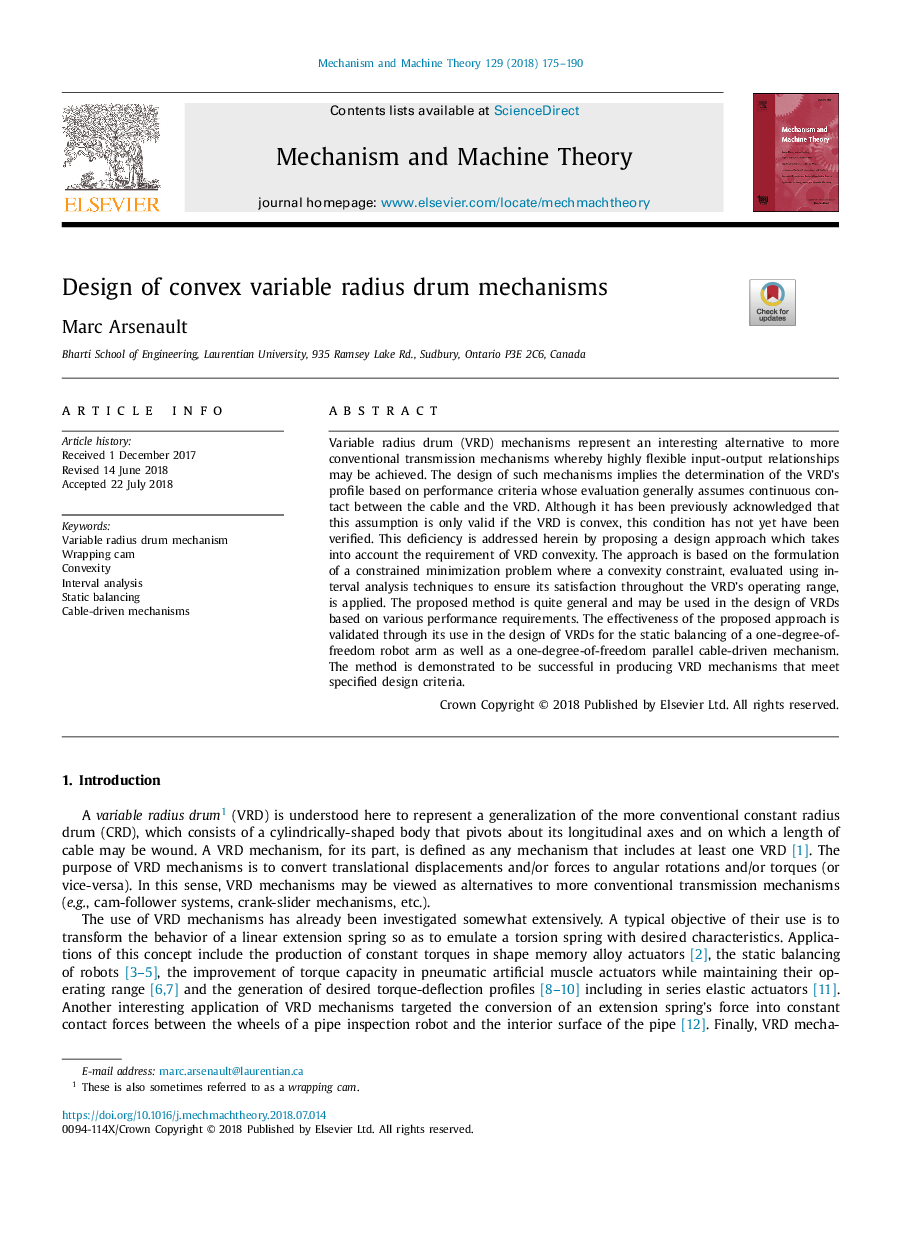| Article ID | Journal | Published Year | Pages | File Type |
|---|---|---|---|---|
| 7178866 | Mechanism and Machine Theory | 2018 | 16 Pages |
Abstract
Variable radius drum (VRD) mechanisms represent an interesting alternative to more conventional transmission mechanisms whereby highly flexible input-output relationships may be achieved. The design of such mechanisms implies the determination of the VRD's profile based on performance criteria whose evaluation generally assumes continuous contact between the cable and the VRD. Although it has been previously acknowledged that this assumption is only valid if the VRD is convex, this condition has not yet have been verified. This deficiency is addressed herein by proposing a design approach which takes into account the requirement of VRD convexity. The approach is based on the formulation of a constrained minimization problem where a convexity constraint, evaluated using interval analysis techniques to ensure its satisfaction throughout the VRD's operating range, is applied. The proposed method is quite general and may be used in the design of VRDs based on various performance requirements. The effectiveness of the proposed approach is validated through its use in the design of VRDs for the static balancing of a one-degree-of-freedom robot arm as well as a one-degree-of-freedom parallel cable-driven mechanism. The method is demonstrated to be successful in producing VRD mechanisms that meet specified design criteria.
Related Topics
Physical Sciences and Engineering
Engineering
Industrial and Manufacturing Engineering
Authors
Marc Arsenault,
